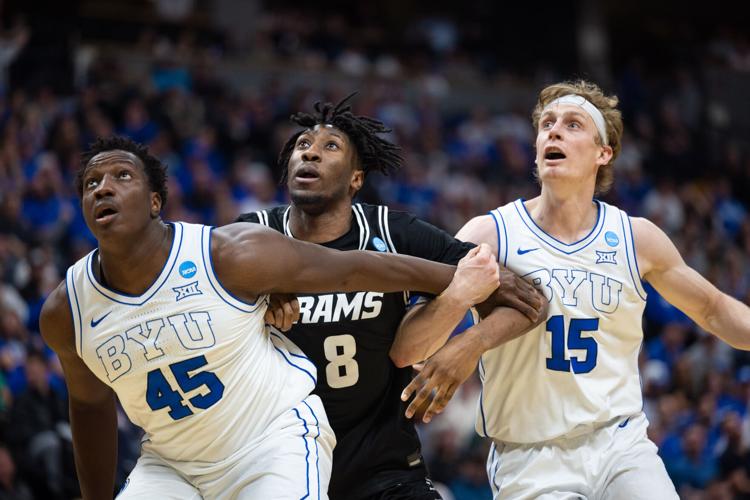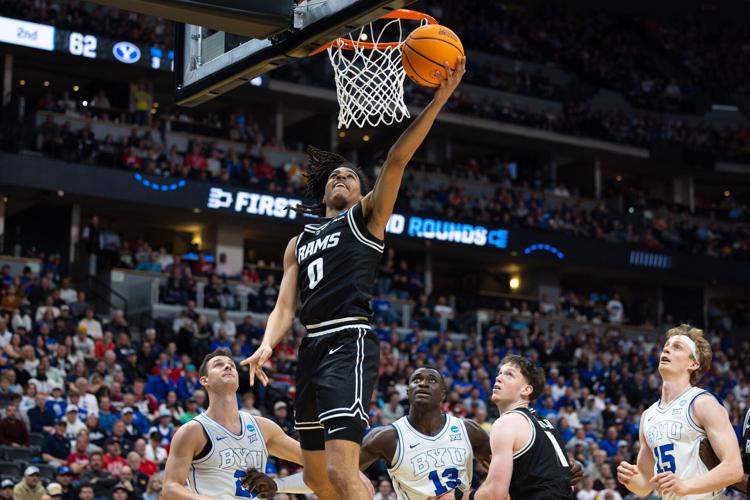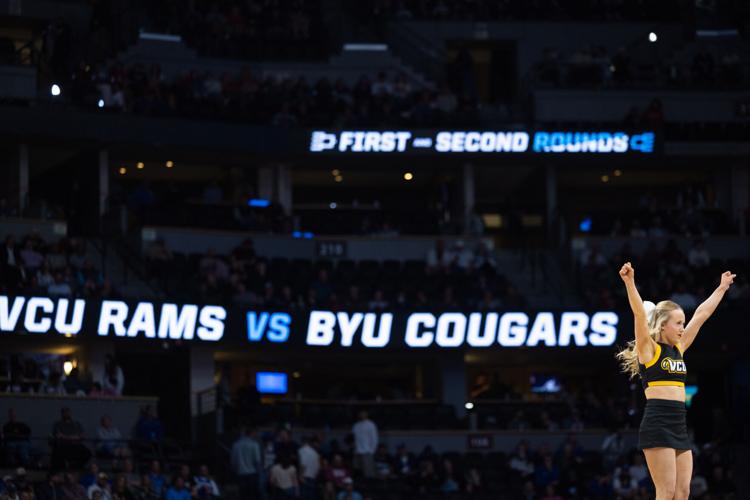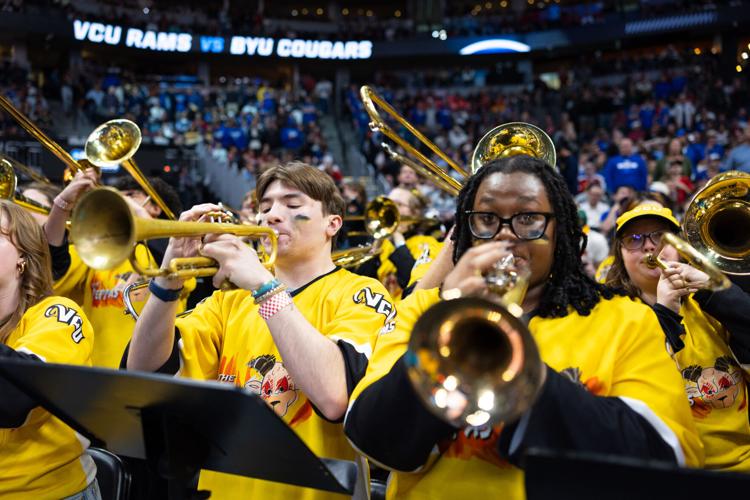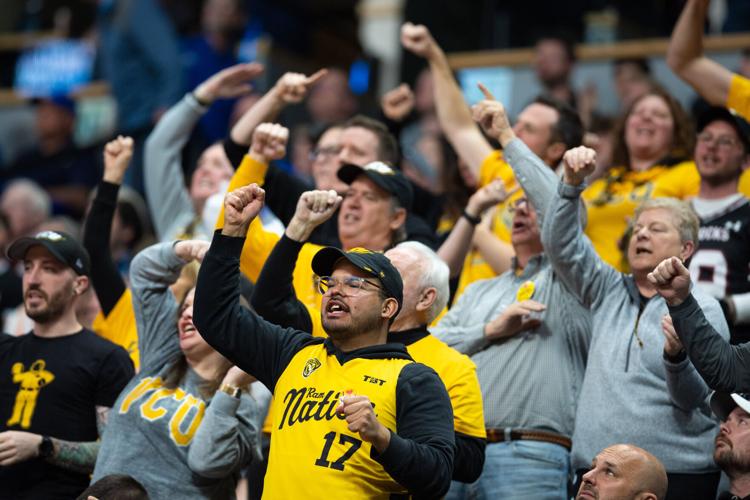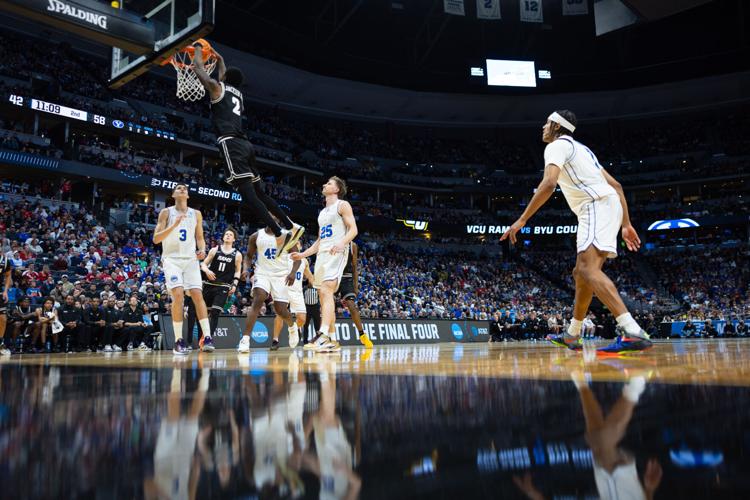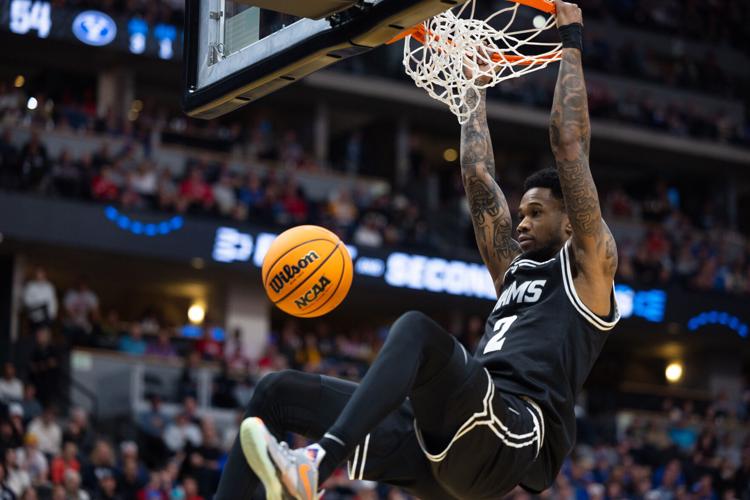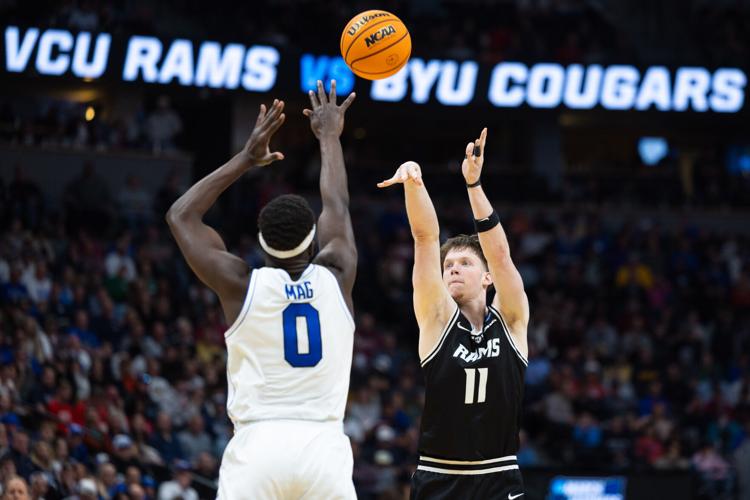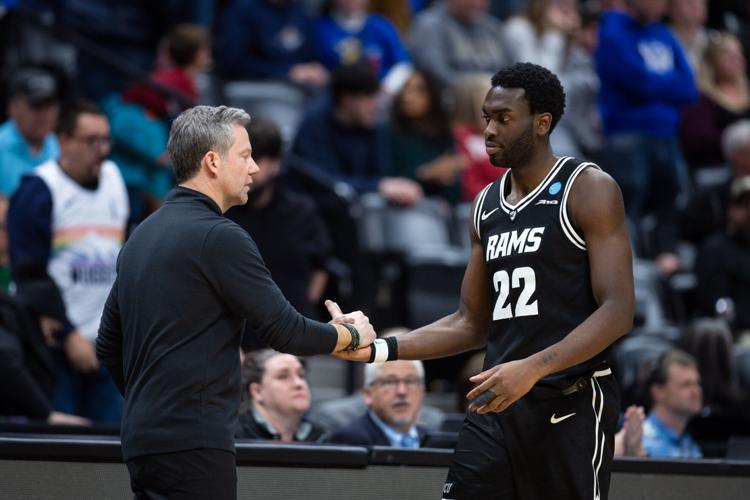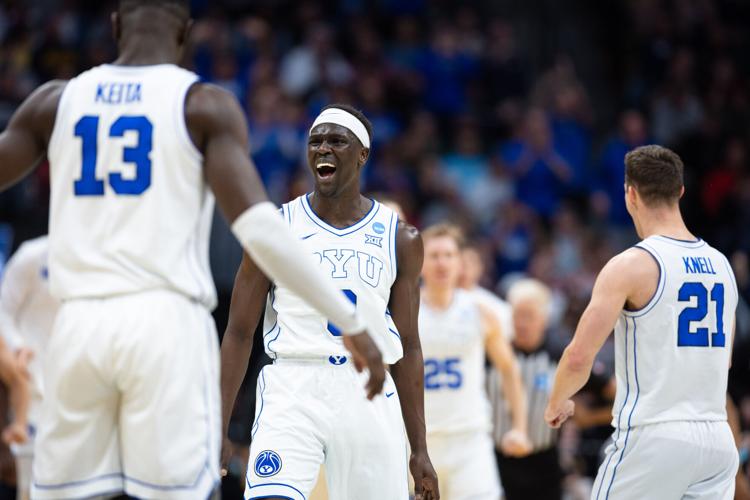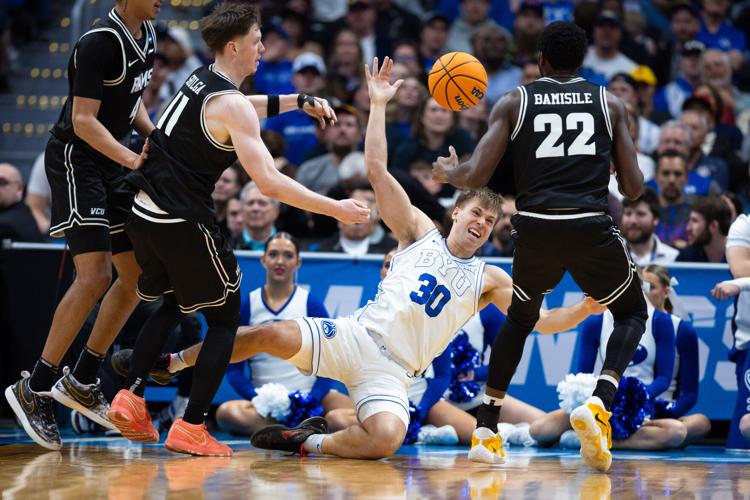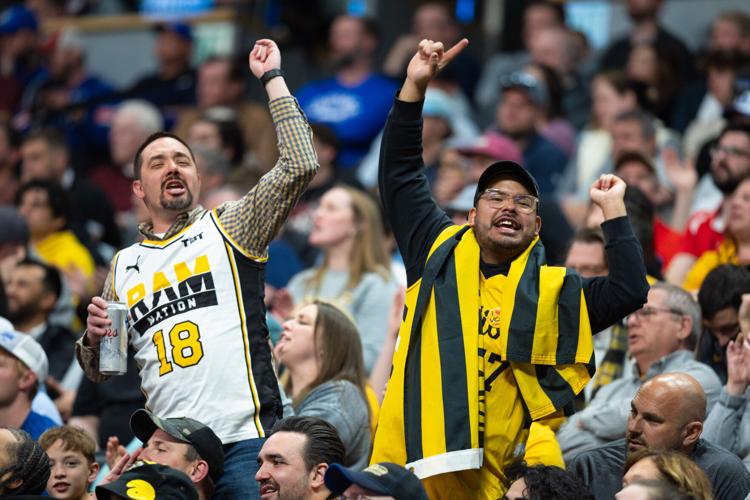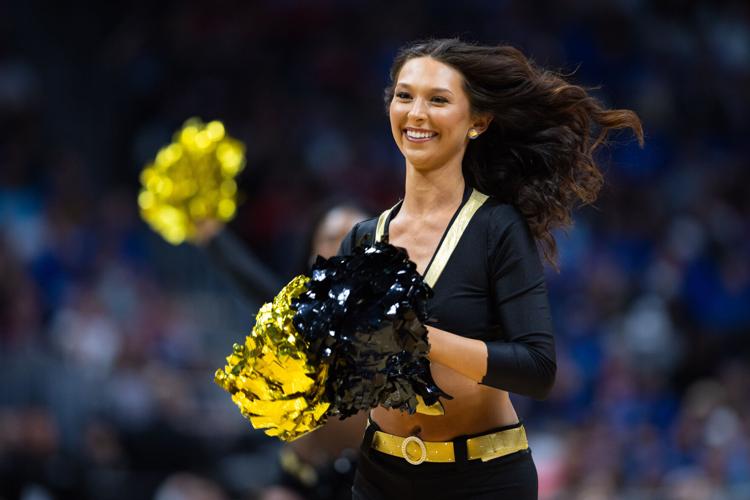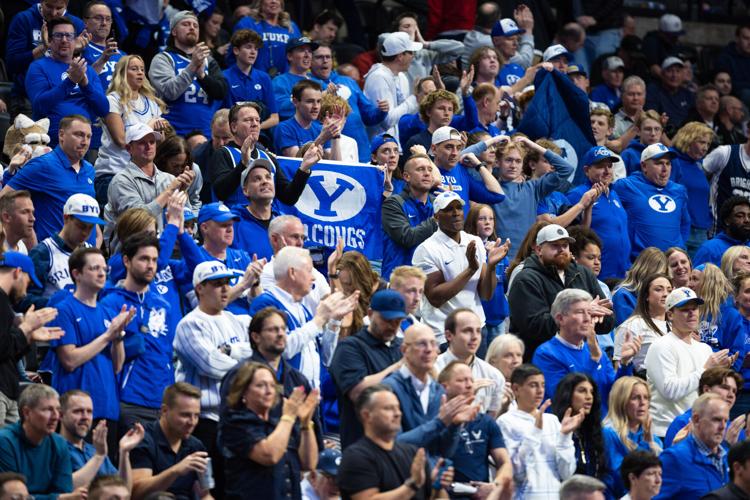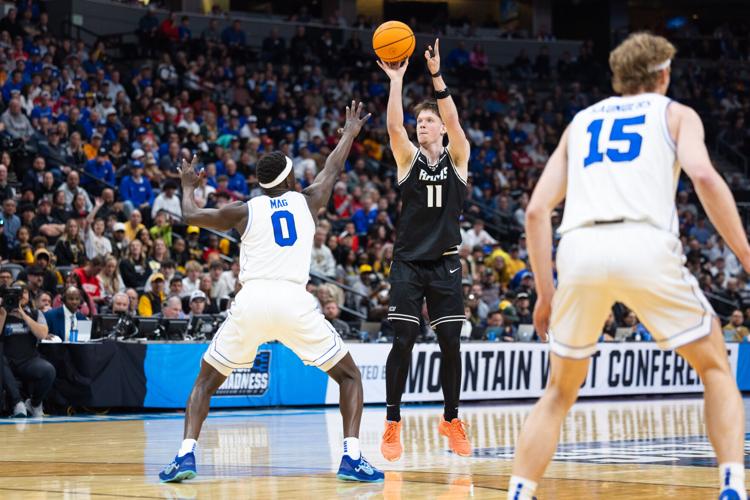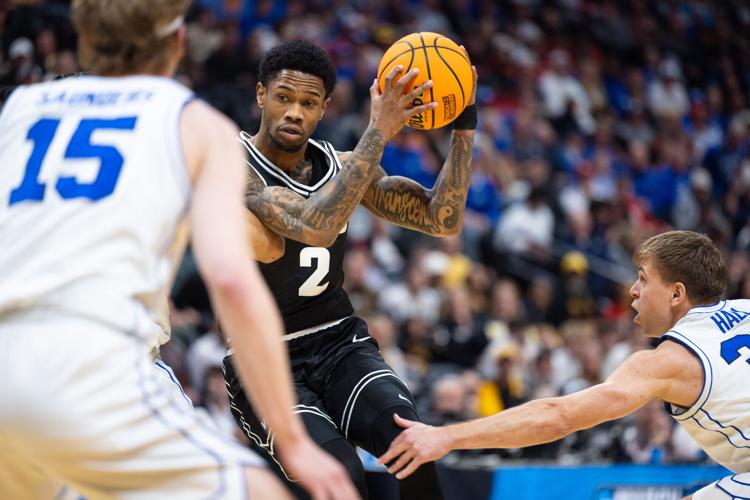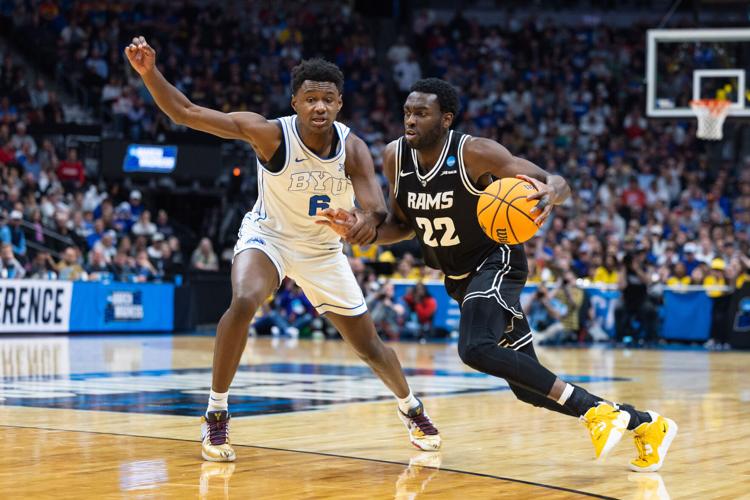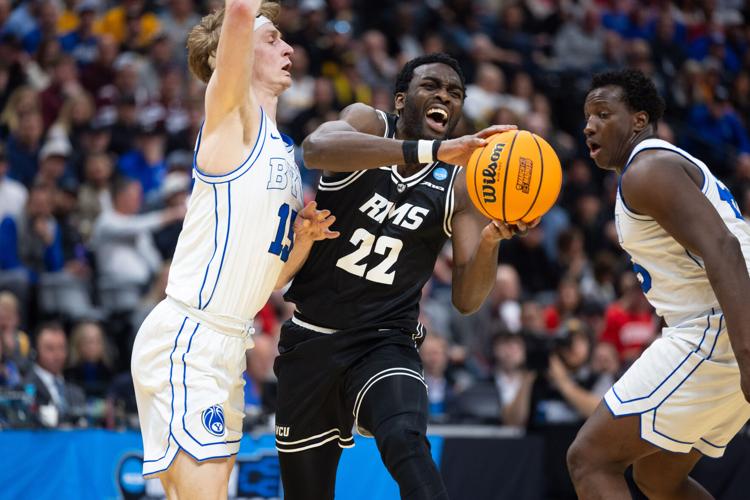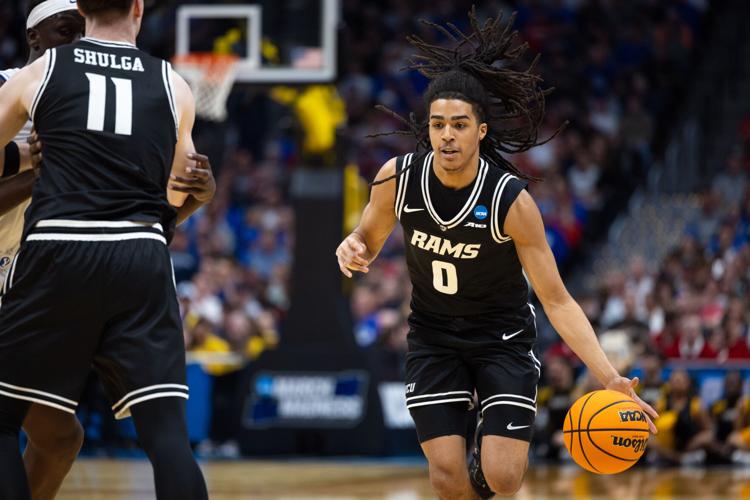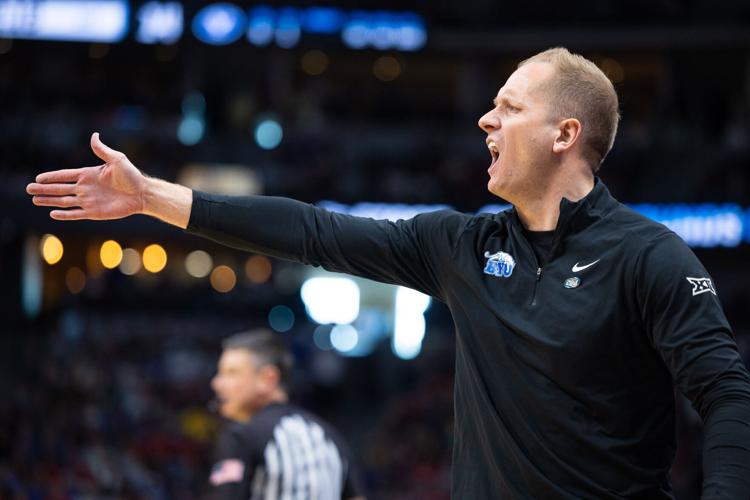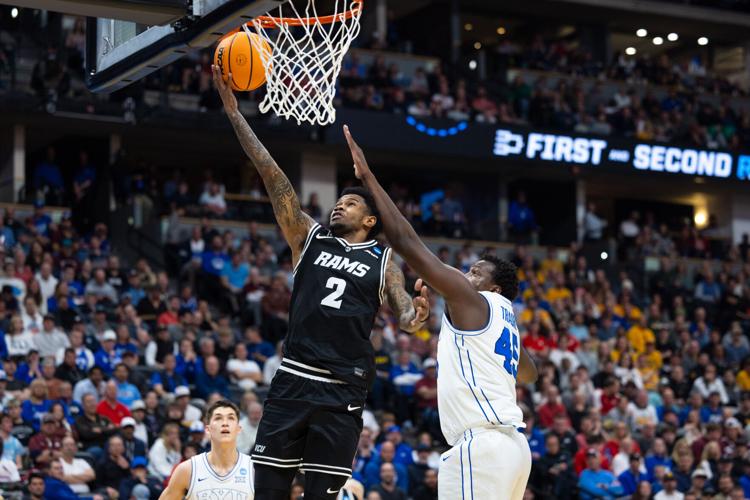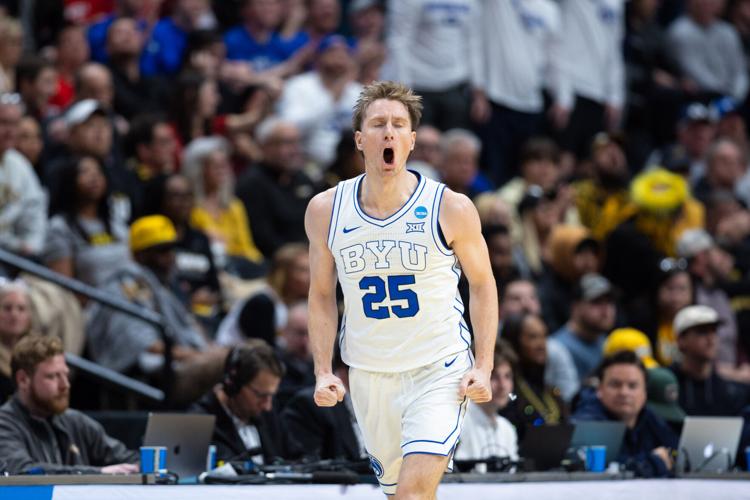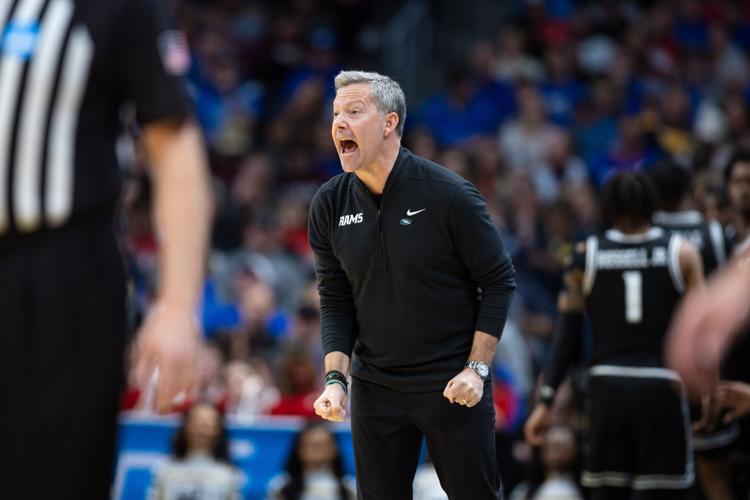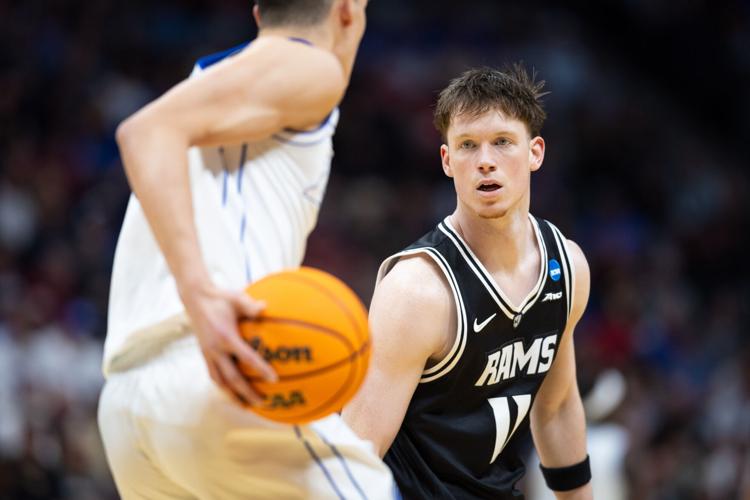What does the college basketball world think of VCU‘s work in the transfer portal under first-year coach Phil Martelli Jr.?
NIL
Evaluating VCU's transfer portal
What does the college basketball world think of VCU‘s work in the transfer portal under first-year coach Phil Martelli Jr.? As the sun sets on portal season, rosters across the country solidify and players begin to arrive on campus to commence their summer workout schedules, pundits are taking stock of the nation’s winners and losers. […]
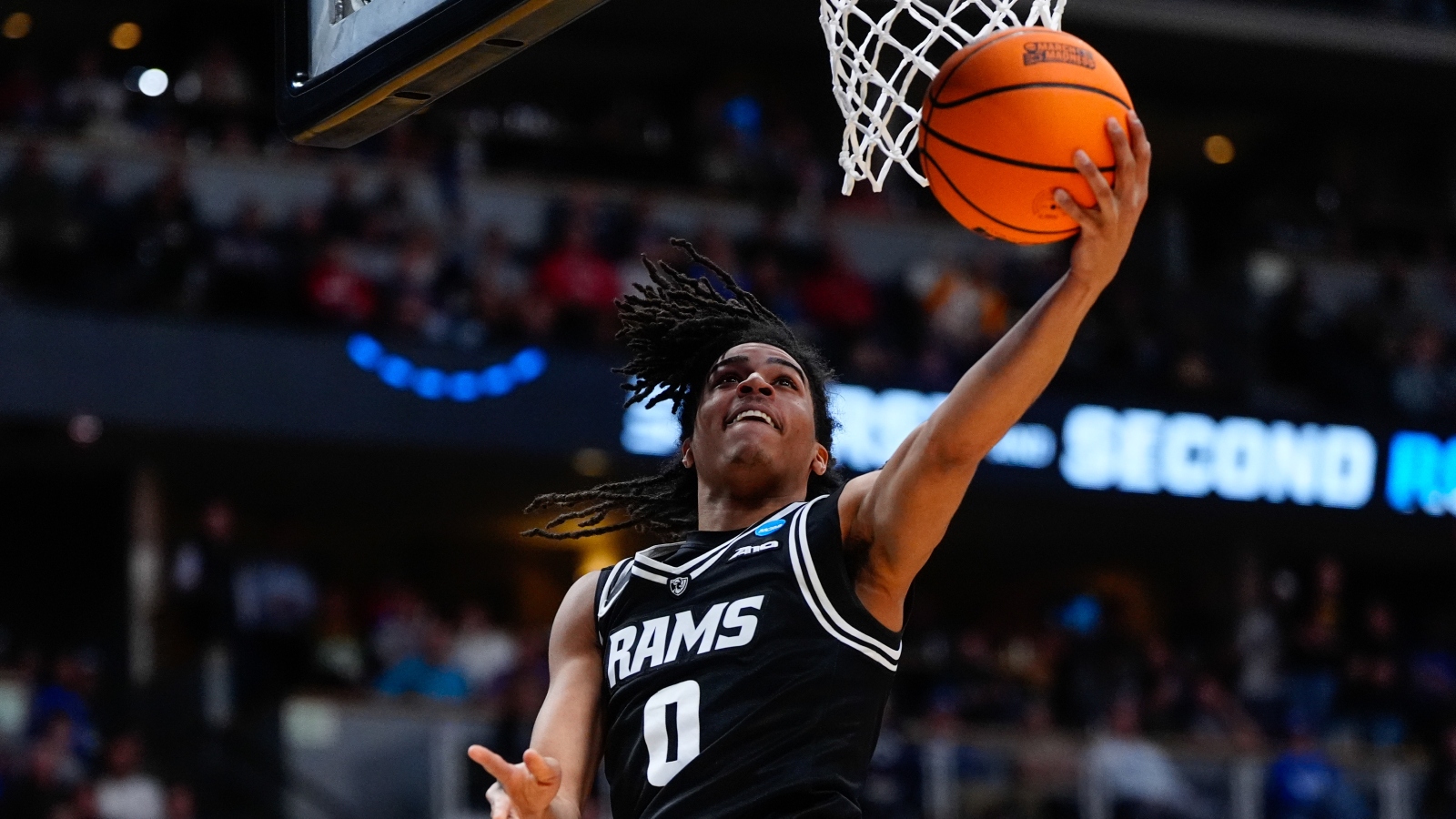

As the sun sets on portal season, rosters across the country solidify and players begin to arrive on campus to commence their summer workout schedules, pundits are taking stock of the nation’s winners and losers.
Tobias Bass, a staff editor for The Athletic’s college hoops coverage, released a list of mid-major winners of the 2025 transfer portal season.
Bass, a scout, analyst and Texas Tech alumnus who’s been at The Athletic for three years, listed VCU, in addition to Atlantic 10 foes George Washington, Saint Joseph’s and Dayton, among his standout mid-major winners.
People are also reading…
My transfer portal Mid Major winners pic.twitter.com/ZRaOHS8Jv0
— Tobias Bass (@tobias_bass) June 1, 2025
The Rams brought in seven transfers —junior guard Tyrell Ward (LSU); redshirt-senior guard Jadrian Tracey (Oregon); sophomore guard Ahmad Nowell (UConn); junior forward Keyshawn Mitchell (Bryant); senior forward Barry Evans (Bryant); redshirt-sophomore forward Jordann Dumont (Villanova); and junior forward Lazar Djokovic (College of Charleston).
That incoming haul will augment five returners — sophomore guards Brandon Jennings and Terrence Hill; junior wing Michael Belle; senior forward Christian Fermin; and redshirt-junior forward Obi Okafor — plus a pair of high-caliber Class of 2025 recruits in freshmen guards Nyk Lewis and Jordan Tillery.
Bass highlighted the collective size Martelli brought in — every transfer, sans Nowell (6-foot) is at least 6-foot-5, and Mitchell, Evans, Dumont and Djokovic are all taller than 6-8.
“This is a big team, and (Martelli) brought in guys that are just productive,” Bass said. “A lot of times, you see teams that are victims of the portal. You don’t want to be a victim. You want to be someone that brings in good players consistently.”
By “victim of the portal,” Bass means that programs are often shoehorned into bringing in players based purely on talent, and not on how those individuals fit into a given team’s culture and style of play.
“Obviously you want to get the best player you can get, but I think you need to get guys that make sense for your culture and your team,” Bass said.
“Especially when you’re bringing in seven guys, they not only have to be good (talent-wise), but they have to be good people. There are so many different personalities, egos, adjustments. They have to be decent individuals, good character kids who want to buy into what you’re trying to sell them.”

New VCU coach Phil Martelli Jr. shows off a notebook he received for attending a basketball clinic at the 2011 Final Four at Houston, where the Rams made their first and only appearance in the NCAA tournament national semifinals.
When former Rams big whistle Ryan Odom departed Utah State for VCU two years ago, former Aggies Max Shulga and Sean Bairstow proved the nucleus around which Odom’s first VCU roster was built.
Such is the case for Martelli with Evans and Mitchell, who bring an understandings of the Bulldogs’ culture and style. Additionally, forwards were at a premium nationally this transfer portal season.
“There are teams now that are still looking for bigs,” Bass said. “And in the A-10, especially at that level, you’ve got to have size because the league is so physical. You have to have some tough guys, and especially some guys you’ve coached in the past, so that was huge for them to get both those guys in there … I would really lean on those guys. They know how coach (Martelli) operates, they know what he expects.”
UConn, Oregon, LSU, Villanova — another facet of VCU’s work in the transfer portal that Bass likes is Martelli’s ability to pull players from high-major programs. Tracey has experience in the NCAA tournament with the Ducks.
Nowell was a top-40 recruit out of high school. Ward was among the SEC’s best shooters two years ago. Though Dumont played sparingly last season after undergoing surgery on both his hips, that fact that the Wildcats recruited him suggests there’s a high ceiling there if he can get healthy for a full summer in the gym with Martelli’s staff.
“Whenever you can get kids at the high-major level that have played in the (NCAA) tournament, that know what it’s like to win games, that’s always important,” Bass said.
“The more (NCAA) tournament players you can bring in, the better. So bringing in Tracey who’s had experience, played in a physical league in the Big 10, he’s going to be another really good player for VCU next year. And Tyrell Ward, he sat out last year but that kid’s really talented … a change of scenery will do him well. He’ll be a sneaky pickup for them.”

VCU President Michael Rao, new VCU men’s basketball coach Phil Martelli Jr. and director of athletics Ed McLaughlin are seen with a VCU jersey at the Siegel Center on March 27.
If there’s a hole in VCU’s roster on paper, it is perhaps backcourt experience. Hill, Jennings, Nowell and Lewis are all underclassmen, and much of the ballhandling responsibility figures to fall on their shoulders.
Ward has appeared in 54 college games, but sat out last season. Tracey has appeared in 93 college games, so his veteran presence will be vital to the makeup of VCU’s backcourt, though he’s a physical guard / forward hybrid, not an on-ball distributor whom you’d expect to bring the ball up the floor.
“It’ll just be age, you can’t teach experience,” Bass said. “It is something to to keep an eye on. Those early games, getting them experience against some good teams, that’ll do them well. Because by the time they get to conference play, you want them to be ready.”
Around the A-10, Bass was struck by how many high-major transfers, and players who were top-100 recruits out of high school, chose to join the league.
The Revolutionaries, Hawks and Flyers all made headway in that regard. For years now, the A-10 has sought to rediscover the days in which it was earning three-to-five at-large bids to the NCAA tournament.
“This year, you’re going to see very good college basketball players, the transfer portal, sometimes it gives, sometimes it takes away,” Bass said, adding that he expects Martelli to win immediately at VCU, and to get the Rams back to the Big Dance.
“The A-10, they definitely got a lot of talent this year. Every night is going to be a war.”
Photos: VCU drops 1st-round game to BYU in NCAA Tournament
The Cougars prevailed 80-71
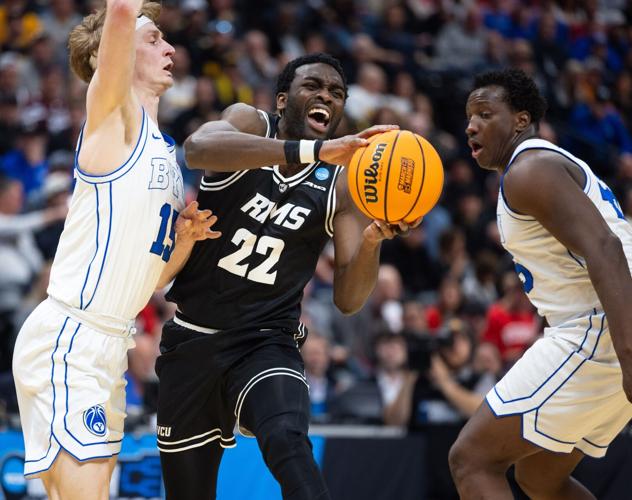
VCU guard and former Monacan High School star Joe Bamisile is fouled by BYU forward Richie Saunders during the first round of the NCAA tournament in Denver on Thursday. The Cougars used a 12-2 run just before halftime to take control against the A-10 champion Rams in an 80-71 victory. VCU was looking for its first NCAA tournament victory since 2016. (Details, Page B1.)
Zach Joachim (804) 649-6555
NIL
Nico Iamaleava hopes Vols fans 'understand' why he left Knoxville
LAS VEGAS — College football’s future wore a baby blue suit, a gold pin that read “UCLA” and a pair of diamond-encrusted hoop earrings. He glided toward the microphone, sat down, then prepared for the grilling about how much money he makes, why he left the University of Tennessee, who betrayed who when he departed […]



LAS VEGAS — College football’s future wore a baby blue suit, a gold pin that read “UCLA” and a pair of diamond-encrusted hoop earrings.
He glided toward the microphone, sat down, then prepared for the grilling about how much money he makes, why he left the University of Tennessee, who betrayed who when he departed Knoxville, and what it all means for the college football world that his story now defines.
Bottom line: If quarterback Nico Iamaleava handles this season as well as he did his half-hour Q&A on Thursday as the Big Ten Conference’s media days event wrapped up, chances are, UCLA will be good — maybe even very good — in 2025.
“I think it’s just: Keep my head down and be humble,” the 20-year-old California native said. “And try not to let the outside noise affect you.”
If he succeeds at that, he will have more discipline than a great majority of fans, experts and journalists who have filled the internet and airwaves with timelines and tick-tock analysis of a decision that shook college football and seemed to say everything about the burgeoning power that players wield in a world of name, image and likeness deals and a rapidly rotating NCAA transfer portal.
The thumbnail of the story is that Iamaleava was a successful quarterback who led Tennessee to the College Football Playoff last season, then abruptly picked up stakes to head much closer to home and play for UCLA.
Money seemed to be the most obvious motive. Reports circulated that he was looking for a raise — maybe a doubling to nearly $4 million a year — to remain with the Volunteers for his redshirt sophomore season this fall. Then in mid-April, he missed Tennessee’s final spring practice the day before its Orange & White intrasquad scrimmage. Just as abruptly, he was gone.
Tennessee coach Josh Heupel handled it diplomatically.
“Today’s landscape of college football is different than it has been,” he said at the time. “It’s unfortunate — the situation and where we’re at with Nico.”
Before he’d even enrolled at Tennessee, Iamaleava was causing his share of turmoil. It was his NIL deal with the Vols that triggered an NCAA investigation and a lawsuit by the attorneys general of Tennessee and Virginia in January 2024.
The NCAA settled that lawsuit, and though there aren’t as many questions about who makes the payments to the players (the colleges can do it themselves now as result of another lawsuit settlement), recriminations that flowed when Iamaleava enrolled at Tennessee kept flowing after he made his move to UCLA.
Asked about what triggered his move and exactly when it happened, Iamaleava said it came around the time “false stuff about whether it was a financial thing or not” started coming out that made him “not feel comfortable in the position I was in.”
Then, in a revelation that not everyone appears quite ready to accept, he said moving closer to where he grew up — in Long Beach, about 30 miles from the UCLA campus — was the biggest piece of the puzzle. He was soon after joined by younger brother Madden, a 6-foot-3, 195-pound freshman quarterback who went through spring practices at Arkansas this year before transferring to UCLA.
“My driving factor to come back home was my family, and I hope every Tennessee fan understands that,” Iamaleava said. “It was really one of the hardest decisions I’ve ever had to make.”
He will not delve into finances, though most of the reporting has shown that Iamaleava will make about as much, or just barely more, with the Bruins than he was making at Tennessee.
“All that stuff is for my business team and my agents to handle,” he said. “I just focus on football.”
Among the other questions consuming college football, and that Iamaleava’s saga reflects as well as anyone’s, is how a player who makes more money and generates more hype than anyone else in the locker room can possibly fit on a team that is still, at its core, filled with teenagers whose football lives will end in college.
UCLA’s second-year head coach, DeShaun Foster, said he scouted that part when the prospect of Iamaleava coming to Westwood became real.
“He’s a team guy and a family guy,” Foster said. “It just felt good that we were getting the right kind of quarterback.”
From a pure talent standpoint, hardly anyone argues that. Iamaleava was considered one of the country’s top prospects coming out of high school. The 6-6, 215-pounder threw for 2,616 yards and 19 touchdown last season, his first as Tennessee’s full-time starter, while leading the Vols to a 10-3 record overall, a 6-3 mark in the powerful Southeastern Conference, and the first 12-team edition of the College Football Playoff. Tennessee lost in the opening round, 42-17, at eventual national champion Ohio State.
As one of the theories about his departure goes, though, he and his family were less than thrilled about Tennessee’s ability to protect him. The Buckeyes sacked him four times, which meant Iamaleava finished the season having been sacked 28 times.
None other than ESPN analyst Kirk Herbstreit — a former Ohio State quarterback — dove into the mix when he said he’d heard Iamaleava’s dad had gone to Heupel in December and said, “Like, hey, listen, you’ve got to get better at offensive line, better at receiver.”
Speaking not so much about that specific story but to the realities of football, Foster said he knows keeping things clean in the pocket for Iamaleava will be key to his success.
“If he stays upright, things are going to go the right way,” said Foster, a former NFL running back who led the Bruins to a 5-7 overall record (3-6 in Big Ten play) last season in his debut campaign as his alma mater’s head coach.
And if things do “go the right way,” there’s at least a chance Iamaleava could be a one-and-done player at UCLA. He is widely thought to have NFL talent if he improves his mechanics and accuracy — two areas that will be helped by better protection — and might need only this season before declaring for the draft.
During his news conference at Big Ten media days, the quarterback brushed aside questions about pro football.
He also said he pays no mind to the billion-dollar questions swirling around the college game every day — most of them revolving around student-athlete compensation, freedom to transfer and other issues that have turned UCLA’s quarterback into a villian in some places, a hero in others, and a player to watch everywhere.
“I love college football,” Iamaleava said. “Everything that goes on with my name, that’s not going to change my love for the game. Obviously, everyone has to move on. I’m excited about what’s next for me. But I’m where my feet (are), and right now, I’m a UCLA football player and I’m excited to go to camp.”
NIL
Trump’s NIL executive order on ‘saving college sports’, explained
On Thursday, President Donald Trump signed an executive order establishing national regulations for the NCAA’s name, image and likeness (NIL) program, which top college athletes have relied on for compensation for their playing and endorsement deals. The order, titled “SAVING COLLEGE SPORTS,” addresses recent litigation on athlete compensation, pay-for-play recruiting inducements and transfers between universities. […]

On Thursday, President Donald Trump signed an executive order establishing national regulations for the NCAA’s name, image and likeness (NIL) program, which top college athletes have relied on for compensation for their playing and endorsement deals. The order, titled “SAVING COLLEGE SPORTS,” addresses recent litigation on athlete compensation, pay-for-play recruiting inducements and transfers between universities.
Talks of Trump interfering with NIL have been floating around since May.
Talks of Trump interfering with NIL have been floating around since May, after reports came out of former University of Alabama football coach Nick Saban, during a private congressional roundtable, urging the president to release an executive order on NIL compensation because he claimed players were showing “less resiliency to overcome adversity.”
For decades, the NCAA imposed strict limitations on how much student athletes could be paid to discourage them from pursuing commercial opportunities on the basis of “amateurism,” the belief that college sports are separate from professional sports in that they should only be played in the spirit of the game, not necessarily for monetary gain. But naturally, athletes began to feel cheated out of their cut of the millions in revenue that their universities were making from major programs such as football and basketball, largely based on their performances.
It wasn’t until last month that a federal judge approved a landmark NCAA settlement that cleared the way for schools to pay athletes directly. This new revenue-sharing model establishes clear and specific rules for schools to regulate third-party NIL agreements and allows for student athletes to have more autonomy and power over their personal brands.
The case of University of Tennessee quarterback Nico Iamaleava is a textbook example of how NIL deals have shaped the college football landscape. Back in 2022, the California native had signed a four-year, $8 million contract with the university. After two seasons, his first as a redshirt and second as starting quarterback, he wanted to increase his deal to $4 million annually.
After unsuccessful attempts to negotiate with Tennessee, the team moved forward without Iamaleava, leaving him to enter the transfer portal. Shortly after, he announced his commitment to UCLA, despite claims that his final contract was nowhere close to the initial figure he wanted.
Iamaleava’s story is representative of the kind of issues Trump’s executive order seeks to address, namely the pay-for-play system that incentivizes athletes to negotiate competitive contracts. The order states that “the third-party market of pay-for-play inducements must be eliminated before its insatiable demand for resources dries up support for non-revenue sports.”
The order looks to level the playing field by preventing an oligarchy of teams that can simply buy the best players, in fear of reducing competition and resembling the world of professional sports too closely.
Section 2 of the executive order proposes that “opportunities for scholarships and collegiate athletic competition in women’s and non-revenue sports must be preserved and, where possible, expanded.” This is in response to concerns about money being concentrated in football and basketball programs.
“While major college football games can draw tens of millions of television viewers and attendees, they feature only a very small sample of the many athletes who benefit from the transformational opportunities that college athletics provide,” the first section states.
The order also notably calls on the secretary of labor and the National Labor Relations Board to “determine and implement the appropriate measures with respect to clarifying the status of collegiate athletes.” The concern here is that should college athletes be considered employees, they would be able to form a union and bargain for increased pay and other benefits.
Ultimately, the issue goes back to power and money and who is in control. Regardless of whether players are compensated as independent NIL contractors or as employees being paid for their performance, Trump’s insertion into the already tumultuous landscape of college sports proves that there is no such thing as avoiding politics, not even in a seemingly bipartisan space such as sports.
Since taking his second term in office, Trump has displayed an interesting, if not puzzling, interest in the world of professional and college sports.
Since taking his second term in office, Trump has displayed an interesting, if not puzzling, interest in the world of professional and college sports. In the past few months, we’ve witnessed attempts to ban transgender athletes from Pennsylvania to California, ICE agents show up to Dodger Stadium, and Trump’s disorderly appearance on the Club World Cup stage. Then, this past Sunday, the president threatened to restrict the Washington Commanders deal to build a stadium if they did not change their name back to the controversial “Redskins.”
Given all this, it isn’t unreasonable to be skeptical of what the president actually means when he proclaims to be “SAVING COLLEGE SPORTS.” The reorganization of college sports in the last few years has placed an emphasis on money, sure — but it has also allowed for more equity in the field.
For instance, NIL deals are significantly benefiting female college athletes, who generally continue to be paid far less than their male counterparts, providing them opportunities that weren’t possible even just a few years ago. Major stars such as WNBA player Paige Bueckers and Olympic gymnast Suni Lee are among the most prominent earners in women’s sports in part as a result of a quickly evolving NIL market.
Even Trump’s oldest granddaughter, Kai, recently signed an NIL deal with Accelerator Energy to support her budding golf career. The 18-year-old University of Miami commit made the announcement in a presidential-style Instagram video, promoting the energy drink brand that is also partnered with the likes of Travis Kelce and Livvy Dunne.
Now, Kai joins the ranks not only in an NIL partnership, but as an equity partner in the brand.
“She’s going to be a leading voice in NIL and beyond,” said Andrew Wilkinson, CEO of Accelerator.
The world of college sports is already unrecognizable from what it was a few years ago, new conflicts are arising that haven’t existed before, and the NCAA’s inconsistencies against the shifting political landscape have left many athletes uncertain about their futures. As Kai makes NIL history, her grandfather has cemented his influence in the collegiate sports world in his own way. Instead of creating long-term solutions, the signing of this executive order seems poised to cause even more instability among yet another disenfranchised group in the country.
NIL
Recruiting rivalry is brewing between two college football powerhouses with different NIL strategies
“Well we’ve always been very well established,” Cristobal said of Miami’s NIL dealings at ACC Media Day. “We’ve always been compliant, and we’ve been aggressive in the right kind of way and use it in a formative fashion that benefits our program and our players.” On the other side, Smart and Co. appear to be […]
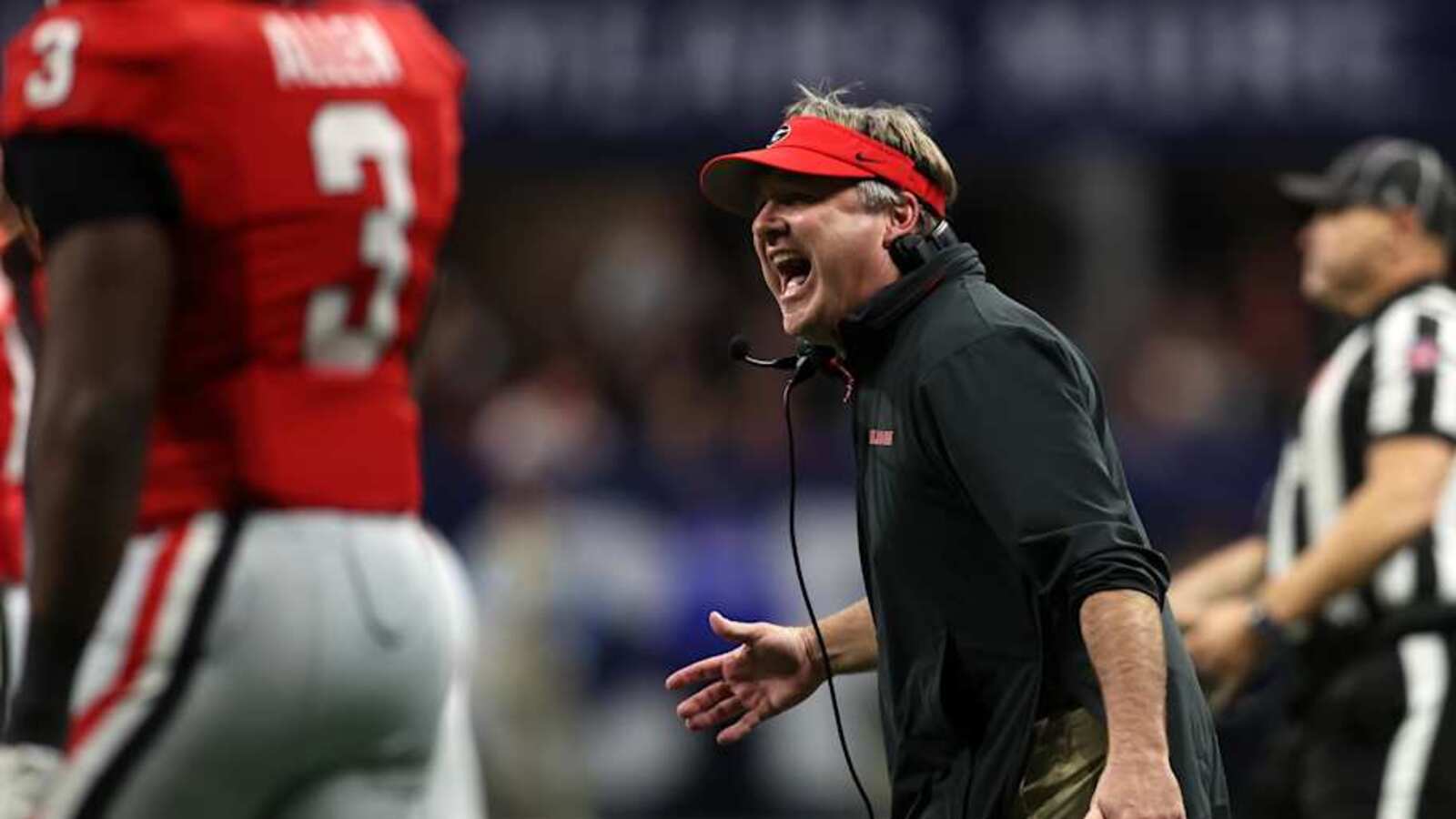
“Well we’ve always been very well established,” Cristobal said of Miami’s NIL dealings at ACC Media Day. “We’ve always been compliant, and we’ve been aggressive in the right kind of way and use it in a formative fashion that benefits our program and our players.”
On the other side, Smart and Co. appear to be offering NIL deals, at least within the high school ranks, that give Georgia more leeway elswhere.
No. 1 quarterback Jared Curtis marked the Bulldogs’ biggest addition in their No. 2 ranked class of 2026. The five-star was down to Georgia and Oregon before re-committing to UGA.
Interestingly, Curtis is slated to make approximately $750,000 in his first year in Athens, according to On3. It’s unknown how Curtis’ other NIL offers stacked up, but he likely could have earned more at another school given his pedigree.
“We sell relationships over transactions,” Smart said at SEC Media Days. “We think the relationship still wins out because the relationship allows you to push people and demand excellence, and we’re going to continue to do that at Georgia.”
The Bulldogs have lost out on other targets to Miami, too. Four-star wide receiver Vance Spafford and four-star Jontavious Wyman both flipped to the Hurricanes after previously being committed to Georgia.
Cristobal and Co. have also being on the other side, losing out on in-state, four-star cornerback Justice Fitzpatrick and Georgia tailback Jae Lamar to the Bulldogs.
“Maybe this inter-conference battle is one recruiting cycle long, but it seems to be only heating up,” Rivals’ Adam Gorney wrote.
Given the substantial NIL backing for Miami and Smart’s proven success on the recruiting trail, it would be a surprise to see this competition cool down. And both programs are located close by in talent-rich states, with plenty of history as winning programs to entice recruits, too.
NIL
MLB Players, DraftKings ‘Close’ to Settlement in NIL Lawsuit
A unit of the Major League Baseball players’ union and sports-betting platform DraftKings Inc. asked a federal judge to pause the union’s right of publicity lawsuit as they work to finalize a settlement. MLB Players Inc. and DraftKings “believe they are close to” a resolution of the September lawsuit over use of players’ names and […]

A unit of the Major League Baseball players’ union and sports-betting platform
MLB Players Inc. and DraftKings “believe they are close to” a resolution of the September lawsuit over use of players’ names and images on the betting site, according to a joint letter filed Thursday in the US District Court for the Eastern District of Pennsylvania. The letter to Judge Karen S. Marston requests a pause on discovery for 30 days and comes after the parties previously agreed …
NIL
Recruiting rivalry is brewing between two college football powerhouses with different
The 2026 recruiting cycle has been an intriguing one for both Georgia and Miami, as the two college football giants continue to battle for some of the nation’s top prospects while seemingly using different NIL strategies. The recruitment of five-star offensive tackle and No. 1 overall player Jackson Cantwell came down to Kirby Smart’s Bulldogs […]
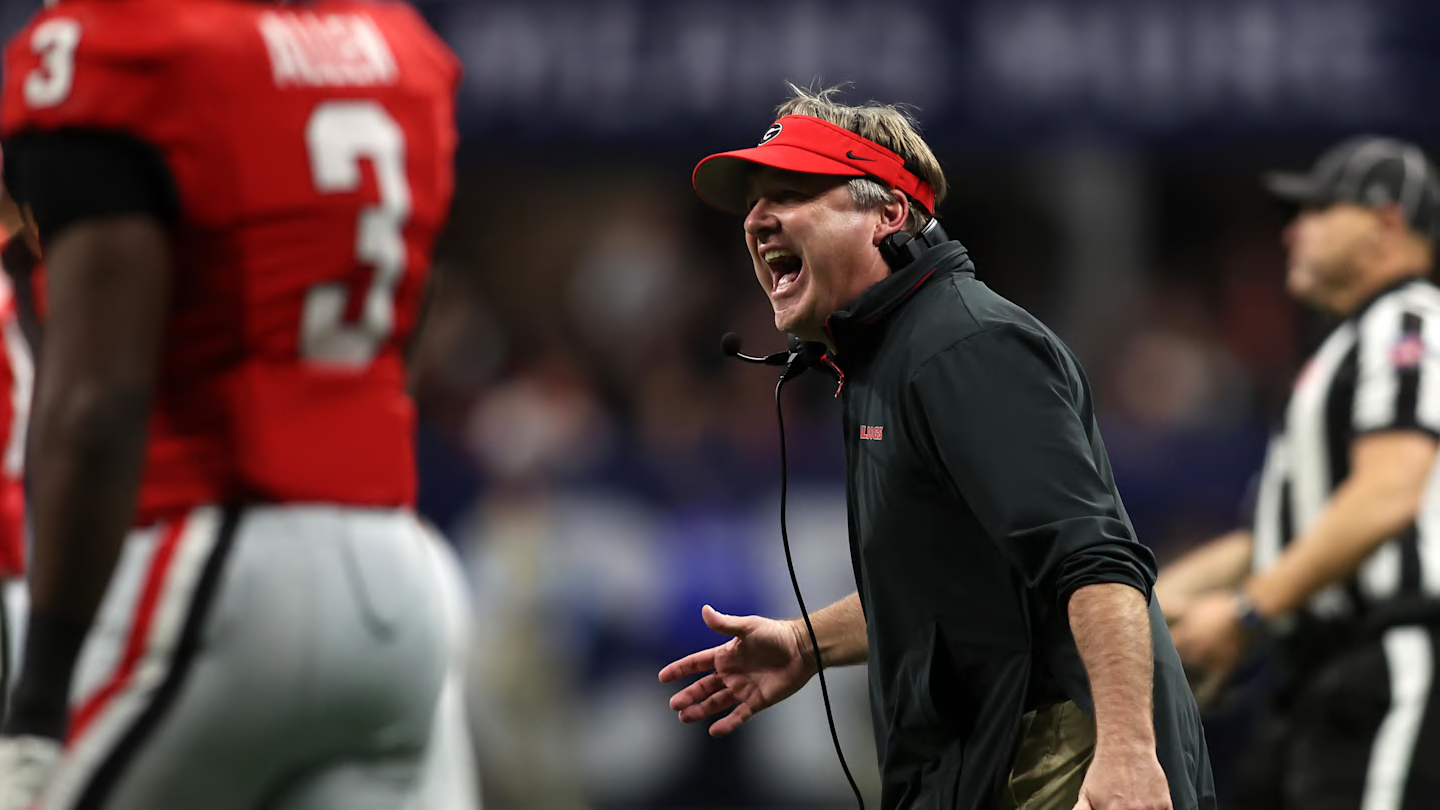
The 2026 recruiting cycle has been an intriguing one for both Georgia and Miami, as the two college football giants continue to battle for some of the nation’s top prospects while seemingly using different NIL strategies.
The recruitment of five-star offensive tackle and No. 1 overall player Jackson Cantwell came down to Kirby Smart’s Bulldogs and Mario Cristobal’s Hurricanes back in May.
That close race was ultimately won by Miami, which reportedly inked Cantwell to an NIL package that is worth $2 million in the first year. That is substantial money for any player, much less one that has yet to take a snap of college football.
Miami, holding the nation’s No. 11 class, came in fifth among the top NIL spenders to this point in 2025, according to an On3 Poll.
“Well we’ve always been very well established,” Cristobal said of Miami’s NIL dealings at ACC Media Day. “We’ve always been compliant, and we’ve been aggressive in the right kind of way and use it in a formative fashion that benefits our program and our players.”
On the other side, Smart and Co. appear to be offering NIL deals, at least within the high school ranks, that give Georgia more leeway elswhere.
No. 1 quarterback Jared Curtis marked the Bulldogs’ biggest addition in their No. 2 ranked class of 2026. The five-star was down to Georgia and Oregon before re-committing to UGA.
Interestingly, Curtis is slated to make approximately $750,000 in his first year in Athens, according to On3. It’s unknown how Curtis’ other NIL offers stacked up, but he likely could have earned more at another school given his pedigree.
“We sell relationships over transactions,” Smart said at SEC Media Days. “We think the relationship still wins out because the relationship allows you to push people and demand excellence, and we’re going to continue to do that at Georgia.”
The Bulldogs have lost out on other targets to Miami, too. Four-star wide receiver Vance Spafford and four-star Jontavious Wyman both flipped to the Hurricanes after previously being committed to Georgia.
Cristobal and Co. have also being on the other side, losing out on in-state, four-star cornerback Justice Fitzpatrick and Georgia tailback Jae Lamar to the Bulldogs.
“Maybe this inter-conference battle is one recruiting cycle long, but it seems to be only heating up,” Rivals’ Adam Gorney wrote.
Given the substantial NIL backing for Miami and Smart’s proven success on the recruiting trail, it would be a surprise to see this competition cool down. And both programs are located close by in talent-rich states, with plenty of history as winning programs to entice recruits, too.
NIL
On MLB draft day, Tyler Bremner was thrilled to go second. And he wished his mom was there
Instead of celebrating a milestone strikeout record with his teammates, Tyler Bremner took the historic ball in his possession, packed up his car and drove south. There was only one person he wanted to see that evening. This was on May 9 — two months before the Los Angeles Angels would make him the No. […]
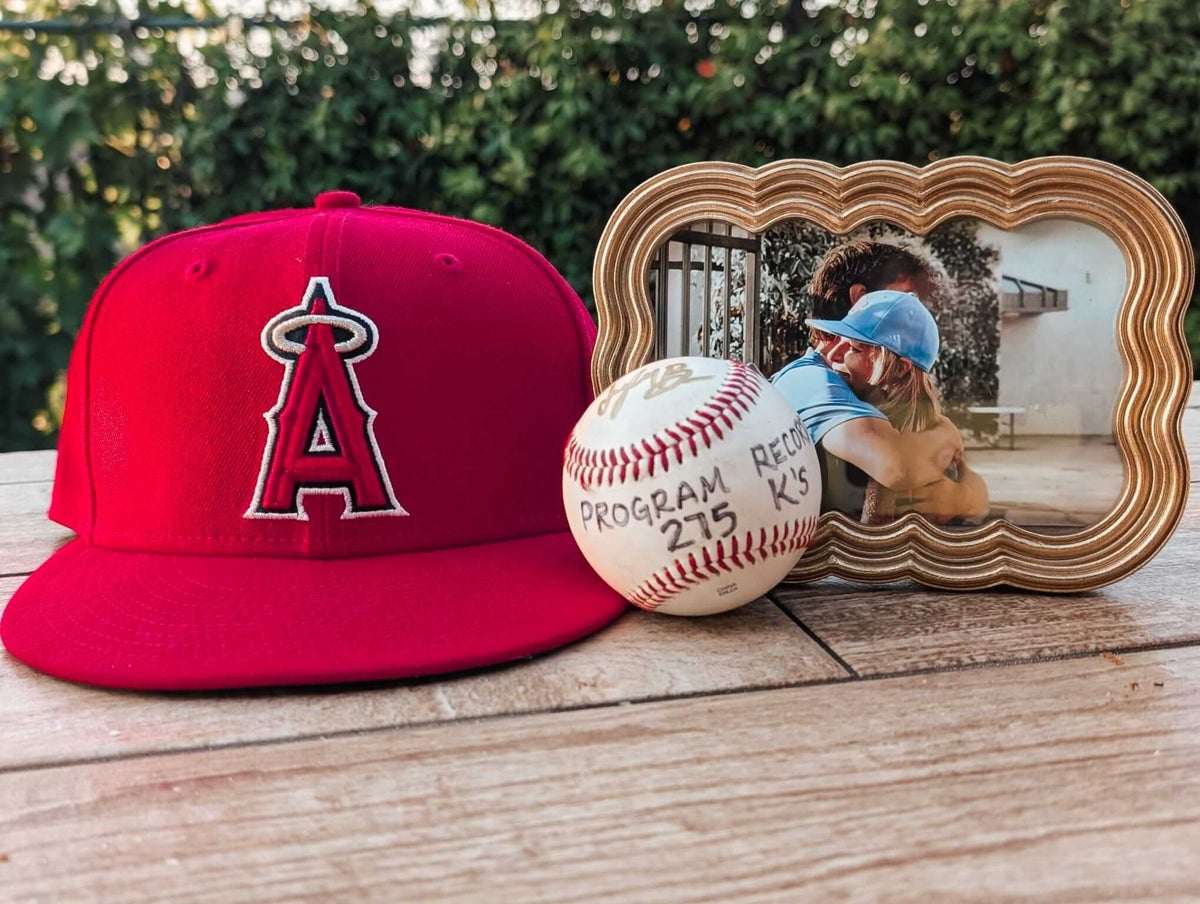
Instead of celebrating a milestone strikeout record with his teammates, Tyler Bremner took the historic ball in his possession, packed up his car and drove south. There was only one person he wanted to see that evening.
This was on May 9 — two months before the Los Angeles Angels would make him the No. 2 pick in the MLB Draft.
One of college baseball’s elite arms, Tyler stayed at UC Santa Barbara for his junior season so he could be close to his mother, Jen, who was diagnosed with triple negative breast cancer in 2020. He’d received interest and NIL offers to transfer, but rebuffed those opportunities at every turn.
Those five-hour drives through the night were what mattered most in his life. Not power programs, TV exposure or extra cash in his pocket. He wanted to see her, and sit by her bedside and play guitar to ease her pain.
On that night, his mom was no longer strong enough to attend games, as she had countless times over his baseball journey. The cancer was making each day more and more painful. She knew, and her family knew, that her life would soon end.

Tyler with his mother, Jen. (Photo courtesy of Tyler Bremner)
She watched on a stream as her son struck out 10 batters — surpassing the school’s all-time record on a Friday night against Loyola Marymount. Bremner didn’t stay after the blowout win. They had two more games that weekend, but he had somewhere more important to be.
He had a baseball to deliver to his biggest fan.
“It was hard,” Tyler said. “But it was the right thing to do. I was happy I was able to have that opportunity. That time was huge for my mom. Everyone told me that when I got here, she lit up and she had a lot more energy. I’m happy that I was able to bring her that joy.”
Jen Bremner died on June 11, five years to the day after she was first diagnosed.
When Bremner was taken in the draft, barely a month later, it was a moment of pure shock and joy. He wasn’t supposed to be picked that early. And the video of him finding out captures the emotion better than words can describe.
What the video didn’t show were those same people just 72 hours prior, all gathered in the exact same location, inside that same San Diego home. There, they held a celebration of life ceremony for Jen. She was 55 years old.
Tyler Bremner and his family’s reaction to being drafted No. 2 overall by the Angels in the MLB draft ❤️ pic.twitter.com/cDlfquPkHb
— SportsCenter (@SportsCenter) July 13, 2025
Growing up, everyone always told Tyler that he and his mom were one and the same. She was an emotional person, expressive of how she felt at all times. That’s why she became Tyler’s most important confidant. He went to her with everything.
“I feel like we were really connected in that way,” Tyler said. “If I had a problem off the field, if I had a problem on the field. Mentally, trying to get through struggles as we all do, she was that person that I went to all the time.”
Triple negative breast cancer is a rare form of the disease, where typical breast cancer treatments aren’t effective.
Following Jen’s diagnosis, Tyler’s father, Jason, held a family meeting with their three kids, then much younger. He leveled with Tyler and his two sisters. He told them that every moment with their mother would be “bonus time.” They didn’t know how much time she had left.
“We have to make sure that we’re making that clock count,’” Jason said. “‘As a family, we all made the decision that, when it’s needed, we’re all going to have to make sacrifices. To make sure that we push the clock as far as we can, and that the time we have is useful and meaningful.”
Her battle teased hope of a full recovery. Following 18 months of chemotherapy treatment, the cancer was held at bay. Not in remission, but for more than two years her condition remained stable.
It was only a year ago that she received a stage four, terminal diagnosis, indicating that her cancer had spread.
She continued rigorous weekly treatments, but not because it would increase her chance of remission. At that point, recovery was not medically possible. Those treatments were to extend her time, as physically painful as it was. She wanted to make it as long as she could, specifically to make it to July 13.
“That was her dream,” Jason said. “To see her son drafted.”
Now, after her death, Tyler is determined to keep her story alive, and to fight for a cause that has become extremely personal to him.
“She would tell me all the time, ‘If you’re able to have that platform later in life, and you have eyes on you, I want you to use it for good,’” Tyler said. “‘I want you to spread awareness on cancer, and spread awareness on my story.’ I’m definitely going to try to honor that.”
He had come into the year after an elite sophomore season, going 11-1 with a 2.54 ERA, and was projected as a potential early draft pick. But the start of his season threatened to derail all of that. By the end of March, he’d posted a 4.24 ERA, without any double-digit strikeout performances.
The Angels considered both his on-field performance and his personal situation, knowing that his family’s tough times might have impacted him. They still believed in him. And over Bremner’s final seven starts, that faith paid off. He posted a 2.91 ERA, while striking out double-digit batters six times. There’s a correlation, he believes. As his mother’s condition worsened, his pitching got better.
“I think it got real for him and everybody around the program really fast, what was going on,” said UC Santa Barbara head coach Andrew Checketts. “I feel like he had another gear, and he left it all out there on the field.”
That’s because pitching wasn’t an escape for Bremner. It was a way to connect. Every time he took the mound, he’d get on a knee and have a conversation in his head. He’d remind himself, “She’s proud of you. She’s watching you. She’s fighting for you.”

Jen Bremner followed every one of Tyler’s games closely. (Courtesy of Tyler Bremner)
He’d draw a heart on the mound — the same way she drew it. He plans to get a tattoo of it, as well.
In the moments where things got tough, he’d go back to that. He’d look at the heart and internalize his reason for drawing it. That would reset him, he said, in a way that’s tough to explain.
If he can make it to the big leagues, he’ll do the same thing. He’ll draw that heart, he’ll have that conversation. And he’ll know that she’s right there alongside him for a moment she made possible.
“I’m not a religious person,” Bremner said. “Up until this point, I haven’t thought much about what the afterlife is, or if that’s even a real possibility. But this all unfolding this way has genuinely strengthened my belief in the whole thing.
“I know she’s here.”
(Top photo courtesy of Tyler Bremner)
-

 College Sports2 weeks ago
College Sports2 weeks agoWhy a rising mid-major power with an NCAA Tournament team opted out of revenue-sharing — and advertised it
-

 Sports2 weeks ago
Sports2 weeks agoNew 'Bosch' spin
-

 Fashion2 weeks ago
Fashion2 weeks agoEA Sports College Football 26 review – They got us in the first half, not gonna lie
-

 Sports1 week ago
Sports1 week agoVolleyball Releases 2025 Schedule – Niagara University Athletics
-

 Sports3 weeks ago
Sports3 weeks agoE.l.f Cosmetics Builds Sports Marketing Game Plan Toward Bigger Goals
-

 Health2 weeks ago
Health2 weeks agoCAREGD Trademark Hits the Streets for Mental Health Month
-

 Youtube3 weeks ago
Youtube3 weeks agoWill LeBron James request a trade? 🤔 Windy says MULTIPLE TEAMS would make offers 👀 | NBA Today
-

 College Sports2 weeks ago
College Sports2 weeks agoBuford DB Tyriq Green Commits to Georgia
-
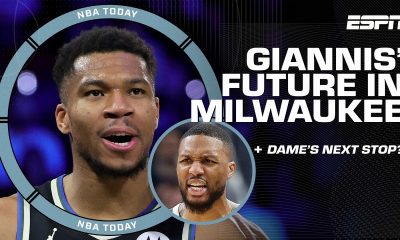
 Youtube2 weeks ago
Youtube2 weeks agoWill Giannis DEPART Milwaukee⁉️ + How signing Turner & waiving Dame impacts the Bucks | NBA Today
-
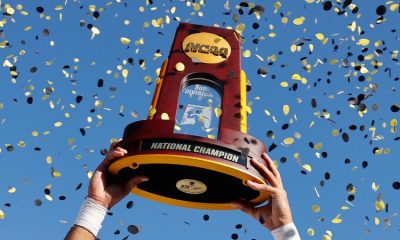
 Sports2 weeks ago
Sports2 weeks agoNew NCAA historical database provides wealth of information on championships

